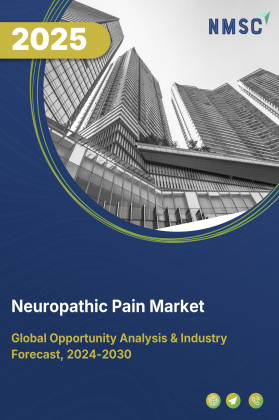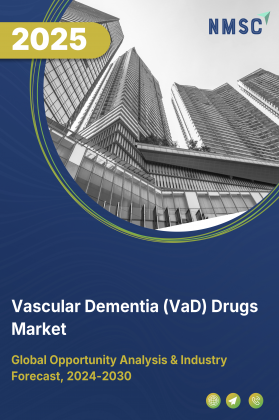
Analgesics Market by Type (Non-opioids and Opioids) and by Route of Administration (Oral Route, Intravenous Route, Rectal Route, Transdermal Route, and Topical Route) – Global Opportunity Analysis and Industry Forecast 2022–2030
Industry: Healthcare | Publish Date: 28-Nov-2024 | No of Pages: 173 | No. of Tables: 126 | No. of Figures: 94 | Format: PDF | Report Code : HC88
Market Overview:
The global Analgesics Market size was valued at USD 35.03 million in 2021 and is expected to reach USD 56.86 million by 2030, at a CAGR of 4.90% during the forecast period 2022–2030.
The term ‘analgesics’ refers to a class of drugs that are designed to relieve pain without causing the loss of consciousness. These medicines are used as pain-relieving agents to reduce different types of pain such as headaches and arthritis.
Increasing chronic and infectious diseases among people
The increasing prevalence of chronic diseases such as heart diseases, stroke, chronic obstructive pulmonary disease, asthma, and diabetes are causing untimely deaths in nations with low to medium incomes. According to the WHO, in 2021, various types of chronic diseases such as cardiovascular diseases, cancer, respiratory diseases, and diabetes are responsible for approximately 17.9 million, 9.3 million, 4.1 million, and 1.5 million deaths, respectively.
In addition, there has been a significant increase in the number of people suffering from infectious diseases such as gastrointestinal, respiratory, and neurology. A surge in the prevalence of these medical conditions increases the demand for painkillers, which in turn is driving the analgesics market growth.
Rising number of medical surgeries across the world
Factors such as the surging demand for exact and appropriate laparoscopic medical procedures, rising need for surgeries for the geriatric population, and growing instances of injury wounds have all contributed to the increased use of analgesics. Analgesia forms a crucial part of the perioperative management of patients undergoing open abdominal surgery. It is now well-established that optimal pain management not only facilitates patient well-being but also enhances recovery after surgery.
The use of conventional modalities including central neuraxial blockade and opioids cannot be extended to patients undergoing fast-track surgery. Hence, an aggressive perioperative analgesic regimen/protocol is required for effective pain relief, with minimal side effects and which could be managed easily by the patient or the relatives at home away from the hospital setting.
The Changing Regulatory Landscape in The Medical Drugs Industry Restrains the Market Growth
Medical device manufacturers are facing an exceptionally unpredictable regulatory environment. From 2005 to 2010, the average time taken to approve a 510 (k) application increased by 43%. Further, the time required to obtain a premarket approval increased by 75%. The US Food and Drug Administration (FDA) mandated that surgeons carry out operations with the utmost clinical care and with the utmost effectiveness of the surgical product.
It also increases the risk of product, especially when companies lack the funds to conduct additional studies to support additional data requirements from the FDA. These delays in approvals along with regulatory reforms regarding use of analgesics also restrain the growth of the market.
Strategic Collaborations and Advancements in Medical Drug Development Creates New Opportunities
Companies in the analgesics industry are increasingly turning to acquisition as a growth strategy. In order to gain a competitive advantage and fortify their foothold in the industry, major analgesics medicine manufacturers are buying smaller businesses. These purchases enable businesses in expanding regionally and gaining specialized expertise in new product research and development.
Advances in the field of molecular neurobiology have created a continual flow of potential targets. Phenotyping of transgenic mice in pain and inflammation checks can provide early target validation, although adoption of such targets is a high-risk strategy. Identifying receptor or ion channel targets that show phenotypic changes related to the pathophysiology of human pain could provide treatments of pain syndromes that are refractory to existing analgesics that create ample growth opportunities for the market players in the upcoming years.
North America currently dominates the analgesics industry
North America holds the lion’s share of analgesics market at present and is expected to boost the growth of the market during the forecast period. This can be attributed to the rising geriatric population suffering from joint pain that has increased the demand for pain treatment therapies. These therapies employ different types of analgesics that further drives the market growth in this region. Moreover, the prevalence of osteoarthritis, cardiovascular diseases, and cancer are on the rise in the region, which has also increased the demand for analgesics.
Asia-Pacific Region Witnessed Substantial Growth in the Global Analgesics Market
The Asia-Pacific region is expected to show a steady rise in the analgesics market; this can be attributed to the increasing prevalence of arthritis, several other bone-related conditions, and diabetic neuropathy, leading to pain. In addition, fever is becoming more prevalent, resulting in an increase in the use of paracetamol, which in turn drives the growth of the analgesics market growth.
Competitive Landscape
The analgesics industry share comprises several market players such as Abbott Laboratories, Bayer AG, Glaxosmithkline plc, Johnson and Johnson, Pfizer, Inc, Novartis AG, Teva Pharmaceuticals, Sanofi SA, ABBVIE INC, and Sun Pharmaceutical Industries, Inc. These market players have adopted various strategies such as acquisitions and product launches to strengthen their footprint in the market.
For instance, in May 2022, Pfizer Inc. acquired Biohaven Pharmaceutical Holding Company Ltd. This acquisition was done for the production of NURTEC ODT for acute treatment and episodic prevention of migraine in adults. Further, in September 2021, Novartis announced that the US Food and Drug Administration (FDA) had granted fast-track designation for LNA043 for the treatment of osteoarthritis of the knee. LNA043 was developed as a potential first-in-class disease-modifying treatment for osteoarthritis (OA).
Analgesics Market Key Segments
By Type
-
Non-Opioids
-
Opioids
By Route of Administration
-
Oral Route
-
Intravenous Route
-
Rectal Route
-
Transdermal Route
-
Topical Route
By Region
-
North America
-
US
-
Canada
-
Mexico
-
-
Europe
-
UK
-
Germany
-
France
-
Spain
-
Sweden
-
Russia
-
Denmark
-
Rest of Europe
-
-
Asia-Pacific
-
China
-
India
-
Japan
-
Australia
-
Indonesia
-
Rest of Asia-Pacific
-
-
RoW
-
UAE
-
Saudi Arabia
-
Brazil
-
Venezuela
-
Kenya
-
Morocco
-
Kenya
-
Nigeria
-
Chile
-
Remaining Countries
-
Key Players
-
Abbott Laboratories
-
Bayer AG
-
Glaxosmithkline plc
-
Johnson and Johnson
-
Pfizer, Inc
-
Novartis AG
-
Teva Pharmaceuticals
-
Sanofi SA
-
ABBVIE INC
-
Sun Pharmaceutical Industries, Inc
Report Scope and Segmentation:
|
Parameters |
Details |
|
Analysis Period |
2021–2030 |
|
Base Year Considered |
2021 |
|
Forecast Period |
2022–2030 |
|
Market Size Estimation |
Million (USD) |
|
Market Segmentation |
By Type (Non-Opioids and Opioids) and by Route of Administration (Oral Route, Intravenous Route, Rectal Route, Transdermal Route, and Topical Route) |
|
Geographical Segmentation |
North America (U.S., Canada, Mexico) Europe (UK, Germany, Sweden, Russia, Denmark, France, Spain, Rest of Europe), Asia-Pacific (China, Japan, India, Indonesia, Australia, Rest of APAC), Rest of the World (UAE, Saudi Arabia, Brazil, Venezuela, Kenya, Morocco, Nigeria, Chile, Remaining Countries) |
|
Companies Profiled |
Abbott Laboratories, Bayer AG, Glaxosmithkline plc, Johnson and Johnson, Pfizer, Inc, Novartis AG, Teva Pharmaceuticals, Sanofi SA, ABBVIE INC, and Sun Pharmaceutical Industries, Inc |




















 Speak to Our Analyst
Speak to Our Analyst

























